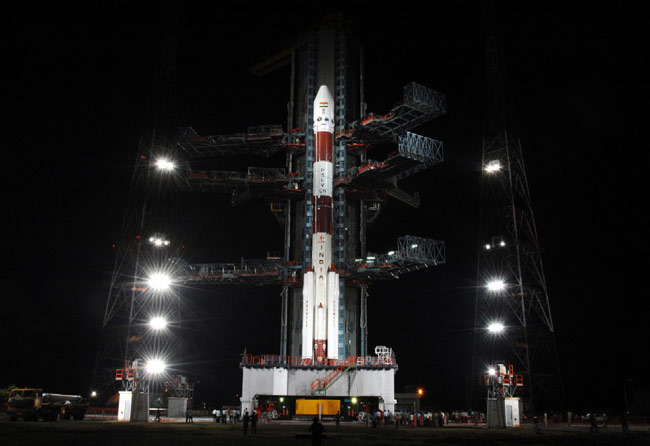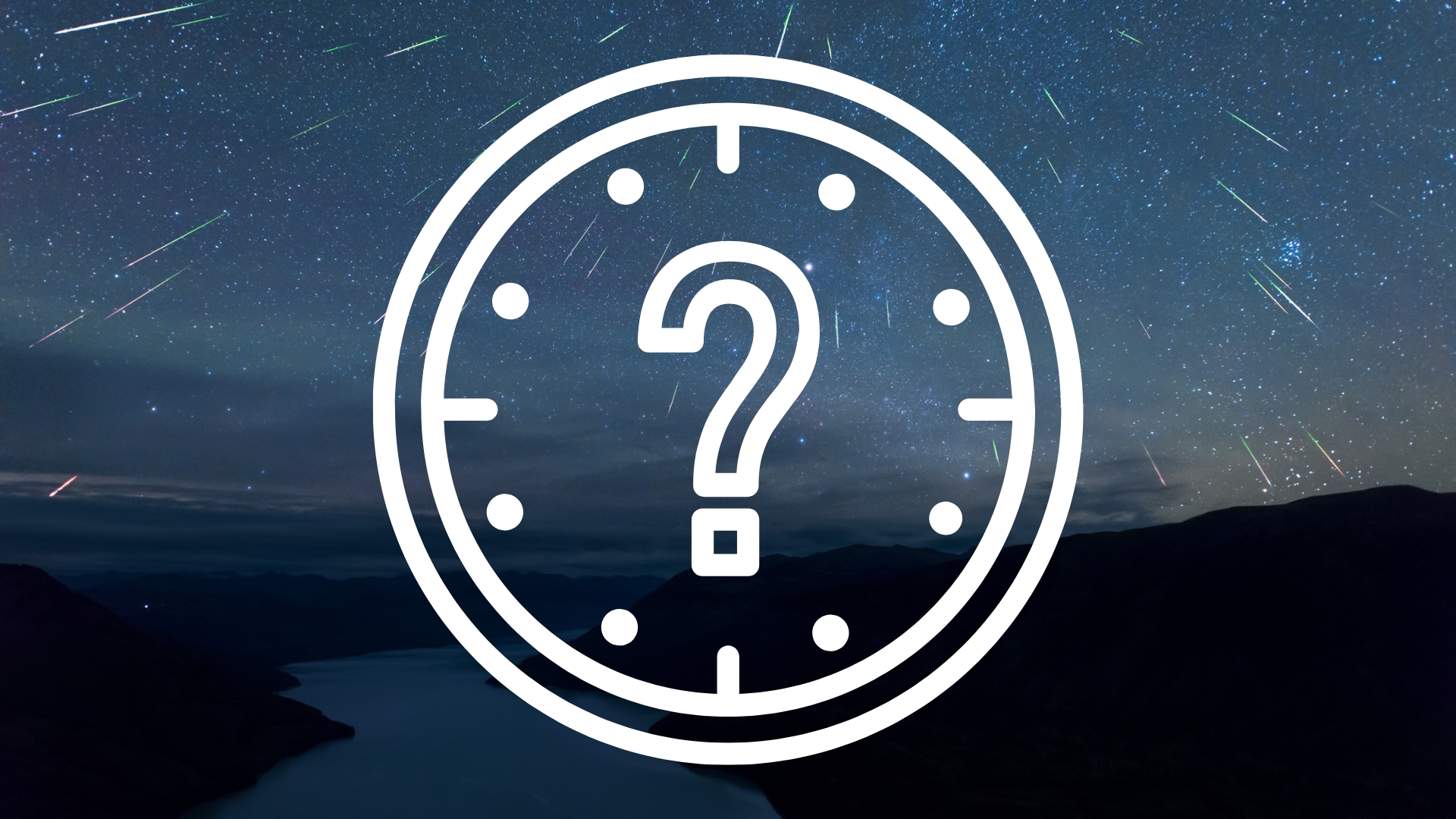India Shoots for the Moon with New Probe

BANGALORE,India - Five years after being formally approved and following a series of latedelays, India?s first-ever planetary mission is on track to launch the morningof Oct. 22 Local Time, with arrival in lunar orbit scheduled to occur 17 dayslater.
The Chandrayaan-1moon mission, featuring Indian, European and U.S. instruments, had been scheduledto launch in April but suffered setbacks including late-arriving payloads andintegration issues. But officials with the Indian Space Research Organisation (ISRO),who unveiled plans for the orbiter in 2000 with a target launch date of 2008,are confident those issuesare behind them.
?Thespacecraft reached the launch site Sept. 30 after completing thermal vacuum,vibration and acoustic testing in Bangalore,? ISRO spokesman S. Satish saidOct. 15. Integration with the launcher was completed Oct. 14 and at press timethe rocket was slated to be moved to the launch pad Oct. 18, he said.
?TheChandrayaan-1 spacecraft after successfully completing [thermal vacuum],vibration and acoustic tests, has reached the launch site,? ISRO spokesman S.Satish told SPACE.com sister publication Space News Oct. 8. ?Allthe operations are going on satisfactorily.?
If all goeswell, Chandrayaan - which means moon vehicle in Hindi - will join two other spacecraftthat reached lunar orbit roughly one year ago: Japan?slarge Kaguya, or Selene, mission, which launched in September 2007, and China?sChang?e 1, which launched in October 2007. NASA?s Lunar Reconnaissance Orbiteris slated to launch in February, meaning that four spacecraft, each built by adifferent country, could be in lunar orbit simultaneously.
Built at acost to ISRO of some $87 million, the fully fueled Chandrayaan-1 will weigh2,874 pounds (1,304 kg) when it lifts off from the Satish Dhawan Space Centreon Sriharikota Island off India?s east coast. After a countdown lasting 52 hours,the probe will lift off tomorrow at 6:20 a.m. Local Time (Tuesday evening Oct.21 EDT) aboard a modified version of ISRO?s Polar Satellite Launch Vehicle, orPSLV.
The probewill be India?s first to leave Earth orbit, something that will be accomplishednot by a direct transfer typical of lunar missions but rather through a seriesof Earth orbit-raising maneuvers. In direct transfer missions, a spacecraft isplaced into a parking orbit around Earth before on board propulsion systemsgive it a substantial velocity boost to place it into a lunar transfer orbitwith an apogee of 238,550 miles (384,400 km) - roughly the moon?s average distancefrom the Earth.
Breaking space news, the latest updates on rocket launches, skywatching events and more!
?Directtransfer would have required an additional stage to PSLV,? said V. Adimurthy, ascientist at ISRO?s Vikram Space Science Centre, where the rocket was built.
Satish saidthe PSLV will inject Chandrayaan-1 into an elliptical orbit around the Earthwith a perigee of 155 miles (250 km) and an apogee of 14,291 miles (23,000 km).The spacecraft will reach lunar orbit by firing its liquid-fueled apogee motorseveral times. The first firing will put the spacecraft in a 186- by22,990-mile (300- by 37,000-km) Earth orbit. Successive firings will raise theapogee to 45,360 miles (73,000 km) and then to the lunar transfer trajectoryorbit of 186 by 240,470 miles (300 by 387,000 km).
?It takesabout 11 days after launch to establish the lunar transfer trajectory,? Satishsaid.
Furtherfirings will insert Chandrayaan-1 into a 310- by 3,106-mile (500- by 5,000-km)orbit around the moon. The orbit will then will be lowered to 62 by 3,106 miles(100 by 5,000 km) and finally to the desired 62-mile (100-km) circularorbit, which will take the spacecraft over the Moon?s poles once every 118minutes.
?If thelaunch takes place on Oct. 22, the spacecraft is expected to enter the100-kilometer lunar orbit on Nov. 8,? Satish said.
TheChandrayaan-1 spacecraft itself is relatively small, measuring about 5 feet (1.5meters) on a side with a dry mass of only 1,153 pounds (523 kg). Itcarries 11 scientific payloads, including six provided by other nations: two fromthe United States, and one each from Britain, Sweden, Germany and Bulgaria.
?The realchallenge was in accommodating different payloads in specific locations andorientations in a small spacecraft,? Mylswamy Annadurai, Chandrayaan-1 projectdirector, told Space News.
TheIndian-built payloads are: the Terrain Mapping Camera; Lunar Laser RangingInstrument; Hyperspectral Imager; High Energy X-Ray Spectrometer; and the MoonImpact Probe.
The 64-pound(29-kg) impact probe will be released from the orbiter over a selectedsite once the spacecraft enters its final orbit, Satish said. During its 18-minutedescent, the impact probe - with India?s national flag painted on its shell - willtake images of the lunar surface. Its impact will kick up a cloud of dust thatwill be observed and analyzed by the instruments on the orbiter.
Among theinternational payloads, India collaborated on two: the X-ray FluorescenceSpectrometer with Britain?s Rutherford Appleton Laboratory; and the Sub-keVAtom Reflecting Analyzer with the Swedish Institute of Space Physics. The otherinternational payloads are: a Mini Synthetic Aperture Radar built by the Johns HopkinsUniversity?s Applied Physics Laboratory of Laurel, Md.; Moon MineralogicalMapper supplied by NASA?s Jet Propulsion Laboratory and Brown University; NearInfrared Spectrometer from Germany?s Max Planck Institute; and Radiation DoseMonitor supplied by the Bulgarian Academy of Sciences.
In additionto mapping lunar surface features and topography, the instrument suite willstudy the Moon?s elemental and mineralogical composition - in part by measuringreflectance from solar flares that are expected to rise in frequency andintensity over the next few years. ?Water-ice, if present, can be detected byseveral of these instruments,? ISRO said on its Web site.
In responseto questions, Narendra Bhandari, who until recently headed ISRO?s planetary explorationdivision, listed four main Chandrayaan-1 objectives:
- Study how volatile elements and compounds - possibly including water - get transported to the poles from the hot lunar surface during the day.
- Produce a digital elevation map with 5-meter resolution both vertically and horizontally. This will enable scientists to select potential sites for a future base.
- Produce chemical and mineral maps of the moon. The mineral spectrometer will measure signals up to 3 microns in the near-infra red portion of the electromagnetic spectrum - data that has not previously been collected - giving scientists new information about water and possible organic compounds at the poles.
- Map subsurface features on the Moon using a synthetic aperture radar.
?Simultaneousphoto-geological, mineralogical, and chemical mapping will enable us toidentify different geological units, which will test the early evolutionary historyof the Moon,? Bhandari said.
He addedthat the simultaneous presence of four Moon probes will enable coordinatedstudy. For example, he said, one mission may benefit from data collected by another;or one probe could observe as another crashes into the surface after completingits mission.
- New Video - Chandrayaan-1: India?s First Moonshot
- Video - Japan?s Kaguya Sees Full Earthrise!
- Mooncrash! The Greatest Lunar Impacts Ever
Dr. Killugudi S. Jayaraman holds a PhD in nuclear physics from the University of Maryland and a master’s degree in journalism from the Medill School of Journalism at Northwestern University. According to the Biotech Times, Dr. Jayaraman played a critical role in Indian science journalism, placing Indian science on a global platform. He was the first Science Editor of the Press Trust of India (PTI), editor of Nature India and Science Editor with IANS. His work can be found in many Indian and international publications.
